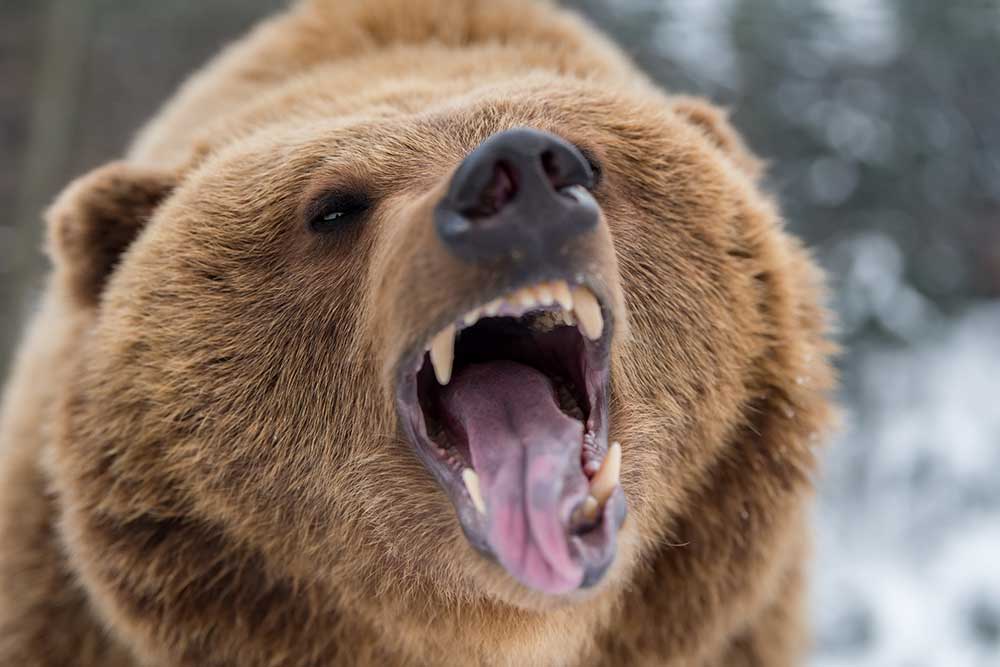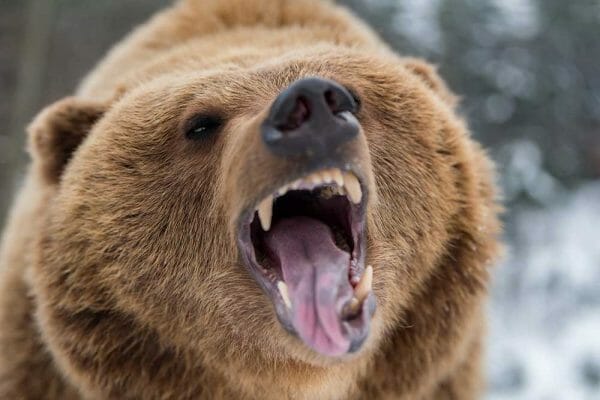

A message posted on Facebook by the City of Leavenworth—a community in the east-Central Cascades of Washington State—cautions the public about “heightened bear activity” resulting in the closure of a popular local trail and warned people to “avoid the trails in this area at this time.”
The irony is they’re not even talking about grizzly bears, but black bears, whose numbers have multiplied in the years since a citizen initiative banned hunting bears with hounds almost 30 years ago. Also, the Washington Fish & Wildlife Commission stopped spring bear hunting, while the general season opens Aug. 1.
The trail has reopened, but according to the city, the bear remained in the area. In 2010, a Bellevue man was attacked by a black bear near his vacation cabin, not far from Leavenworth near Lake Wenatchee.
Leavenworth is located along U.S. 2, roughly a hundred miles south of where the U.S. Fish & Wildlife Service and National Park Service have announced intentions to transport and release, over the next several years, up to 25 grizzly bears from other locations. They will be released in the North Cascades of Okanogan and Skagit counties, and proponents, typically from urban areas far away, are all excited about having another apex predator in someone else’s backyard.
Ammoland’s Dean Weingarten has discussed using guns in defense against bears, and the outcome isn’t always guaranteed. Hikers talk about carrying bear spray, which also isn’t certain to work every time.
But are concerns about grizzlies in the North Cascades justified, or are critics overreacting? Bear attacks are rare events, but it will only take one for the finger-pointing to begin.
The Cowboy State Daily in Wyoming recently noted, “If Wyoming grizzlies are selected to repopulate Washington State’s remote North Cascades region, they might not receive a warm welcome from locals.” Make that “absolutely not.”
As if to underscore the problem with Wyoming grizzlies, the Cowboy State Daily just reported its first “verified” grizzly attack of the season. The victim is a 35-year-old Massachusetts man who reportedly had a “surprise encounter” with two bruins. He sustained serious injuries and had to be hospitalized.
With such reports surfacing, can it be any wonder why Evergreen State residents who actually live in the region where these bears will be released are raising alarms?
More than 12,000 comments were received during a public comment period last fall. The government didn’t provide a breakdown on pro versus con in its news release.
The story quoted Omak resident Chance Cornell, who told the publication, “They are a major, major apex predator, they are at the top of the food chain.”
Translation: Humans (i.e. hikers, hunters, horse riders, livestock, the once thriving mule deer population, etc.) are some rungs down the food chain ladder. Social media has hardly ignored the controversy. A question about carrying guns on hikes, posted on Facebook’s “Washington Hikers and Climbers with Guns” page brought more than four dozen responses.
The liberal Seattle Times is treating this as a good plan, noting in a recent article, “Some elements have changed since the bears roamed among the crags and through the meadows, but research suggests the bears might even thrive amid a changing climate…They also have the potential to help restore balance in an ecosystem that once relied on the apex predator as gardeners — tilling soils for plants and dispersing seeds through their scat.”
On the other hand, Republican Congressman Dan Newhouse, whose district encompasses most of the North Cascades region, was clearly not pleased with the NPS/FWS announcement last month.
“Today’s announcement reinforces what we feared: no amount of local opposition was going to prevent these federal bureaucrats from doing what they wanted all along,” Newhouse said in a message posted on “X” (formerly Twitter).
When NBC reported the decision in April, the network quoted Rachel McClure, secretary of the Okanogan County Cattleman’s Association, who observed, “We already have predator issues in the state. We don’t need another apex predator when we can’t deal with what we have. We’re busy dealing with wolves. We don’t need to be thinking about bears.”
But now that the decision has been made, McClure and a lot of other people—ranchers, orchardists, hunters and back country hikers—will be thinking about bears a lot.
The NPS notes the last confirmed sighting of a grizzly bear in the Norh Cascades ecosystem was in 1996.
Under the program, the NPS has set down some guidelines, including what conditions must be met if someone is forced to kill a grizzly: “Self-defense or the defense of others based on a good-faith belief that the actions taken were to protect the person from bodily harm.”
In Washington State, under RCW 9.41.060, “Any person engaging in a lawful outdoor recreational activity such as hunting, fishing, camping, hiking, or horseback riding, only if, considering all of the attendant circumstances, including but not limited to whether the person has a valid hunting or fishing license, it is reasonable to conclude that the person is participating in lawful outdoor activities or is traveling to or from a legitimate outdoor recreation area” and they may carry concealed without a concealed pistol license.
In the Facebook discussion by hikers and climbers with guns, the .44 Magnum and 10 mm Auto appear to be top choices for packing in bear country. Probably add the .41 and .357 magnums as well, while one guy suggested a .500 Smith & Wesson magnum.
Last year in Montana, a man was attacked by a grizzly bear in the Custer Gallatin National Forest near Big Sky, according to CNN. Rudy Noorlander lost part of his jaw in that attack, and he is still recovering. He was helping some hunters locate a downed deer. This attack occurred on trail Noorlander had used for many years. The story said he pulled a gun but it apparently misfired, and he could not get his bear spray out in time.
Back in 2022, according to TheMeatEater.com, a shed hunter identified as Craig Clouatre was killed by a grizzly. Clouatre, of Livingston, Mont., was found by searchers the day after he disappeared.
Grizzly advocates are quick to remind people that bear attacks are rare, even in Alaska. But they do happen, and from all indications, people closer to the scene feel they’ve been ignored.
About Dave Workman
Dave Workman is a senior editor at TheGunMag.com and Liberty Park Press, author of multiple books on the Right to Keep & Bear Arms, and formerly an NRA-certified firearms instructor.







